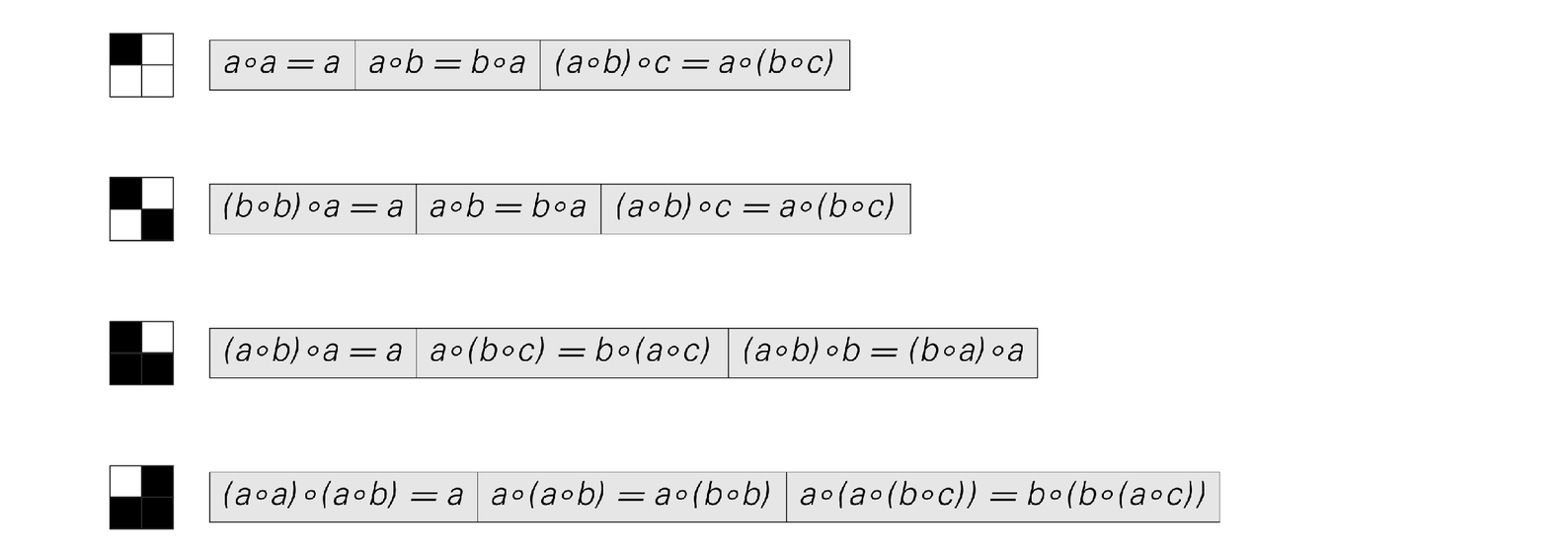this can be done for the fourth axiom system above. But if one removes just a single axiom from any of the axiom systems above then it turns out that they no longer work, and for example they cannot establish the equivalence result stated by whichever axiom one has removed.
In general one can think of axioms for an operator system as giving constraints on the form of the operator. And if one is going to reproduce all the equivalences that hold for a particular form then these constraints must in effect be such as to force that form to occur.
So what happens in general for arbitrary axiom systems? Do they typically force the operator to have a particular form, or not?
The pictures on the next two pages [804, 805] show which forms of operators are allowed by various different axiom systems. The successive blocks of results in each case give the forms allowed with progressively more possible values for each variable.
Indicated by stars near the bottom of the picture are the four axiom systems from the bottom of this page. And for each of these only a limited number of forms are allowed—all of which ultimately turn out to be equivalent to just the single forms shown on the facing page.
But what about other axiom systems? Every axiom system must allow an operator of at least some form. But what the pictures on the next two pages [804, 805] show is that the vast majority of axiom systems actually allow operators with all sorts of different forms.
And what this means is that these axiom systems are in a sense not really about operators of any particular form. And so in effect they are also far from complete—for they can prove only equivalence results that hold for every single one of the various operators they allow.

Axiom systems that can be used to derive all the equivalences between expressions that involve operators with the forms shown. Each axiom can be applied in either direction—as in the picture on page 775, with each variable standing for any expression, as in a Mathematica pattern. The operators shown are And, Equal, Implies and Nand. They yield respectively junctional, equivalential, implicational and full propositional or sentential calculus (ordinary logic).



